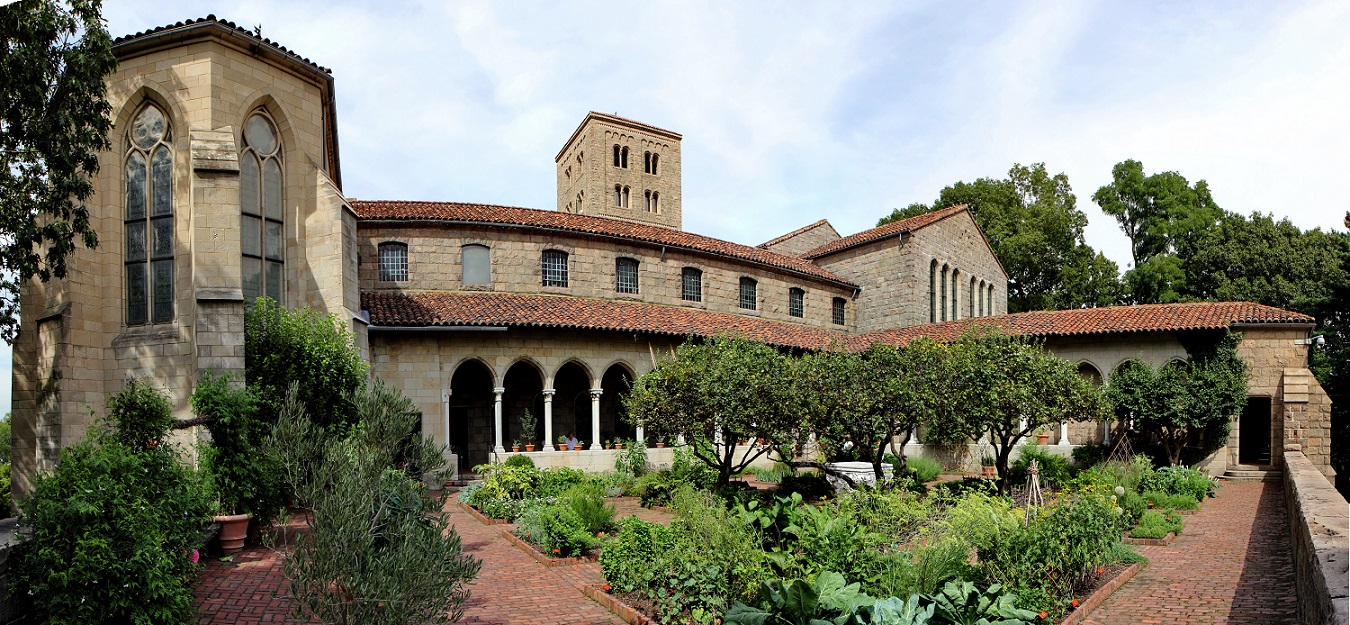Journal

July 29, 2014
The Cloisters
The Cloisters opened on May 10, 1938. A treasured landmark; this branch of the Metropolitan Museum of Art sits on the highest point in New York City in Fort Tryon Park. With sweeping views of the Hudson River, the Cloisters is home to a world-class collection of medieval art and architecture. John D. Rockefeller Jr. paid for the building and many of its contents, and George Grey Barnard, the sculptor, acquired many of the Romanesque and Gothic objects, and the architectural elements.
The architect for the Cloisters was William Welles Bosworth. The Gothic collection that the Cloisters is designed around was formed by Sculptor George Grey Barnard. Barnard studied sculpture at the Art Institute of Chicago. In 1883, when he was 20 years old, Barnard moved to Paris to train in the atelier of Pierre-Jules Cavelier while studying at the Ecole Nationale Superieure de Beaux-Arts. With support from a friend and admirer, Alfred Corning Clark, Barnard was able to set up a studio and from there his career began.
In response to praise during the opening speeches of the museum, John D. Rockefeller protested that his contribution, “being largely financial” was “relatively unimportant” and that the real credit belonged to others. He said, “If what has been created here helps to interpret beauty as one of the great spiritual and inspirational forces of life having the power to transform drab duty into radiant living; if those who come under the influence of this place go out to face life with new courage and restored faith because of the peace, the calm, the loveliness they have found here…, those who have builded here will not have built in vain.”
Inside the museum one can see the Unicorn tapestries on display. Rockefeller gave the tapestries to the Metropolitan in 1935. It is likely that the group of seven Unicorn tapestries were designed in Paris but woven in Brussels. The tapestries are first documented in 1680 when they hung as décor in the homes of Francois VI de la Rochefoucauld. They were looted during the French Revolution and then recovered and restored in the 1850s. There is little known regarding the early history of the tapestries. The rich botanical details and dramatic scenes on the tapestries have long inspired many interpretations, including chivalric and Christological readings.
In addition to the different tapestries at the Cloisters, there is a collection of medieval chalices, statues, aquamaniles, paintings, medallions, and other artifacts. The architectural elements, from the archways, capitals, and doors, to the hardware are also medieval masterpieces.
In 1906, Barnard acquired many fragments dating to the turn of the thirteenth century from the cloister of Saint-Guilhem-le-desert, twenty five miles north of Montpellier. By 1907, Barnard had assembled substantial portions of four more cloisters from other monasteries in the region. Barnard brought his collection to New York where he put the art on display. In May of 1925, Barnard’s collection was purchased by Rockefeller and the Metropolitan Museum for $600,000. The entire collection is on display and integrated into the architecture of the Cloisters.
Please visit our twitter page to follow our series on the Cloisters:
https://twitter.com/askthedesigners
Best,
Sarah A. Blank
Sarah Blank Design Studio is a high-end architectural design firm that specializes in high-end kitchens, butler’s pantries, libraries, and master bedrooms, bath suites. The firm works predominantly in Fairfield County and Westchester County. Our award winning firm, with 33 years of experience, often works beyond the kitchens and baths of a clients home, and designs the architectural interiors for many of the projects that have been commissioned.